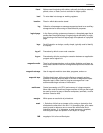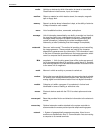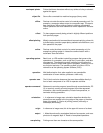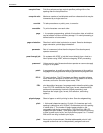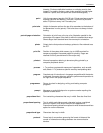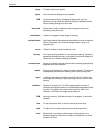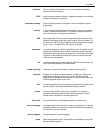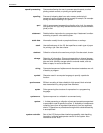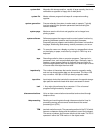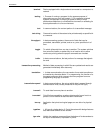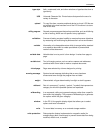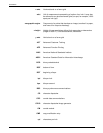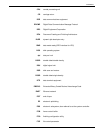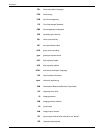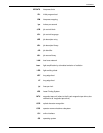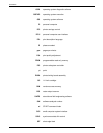
GLOSSARY
XEROX DOCUPRINT 180 LPS PDL REFERENCE GLOSSARY-21
system disk Magnetic disk storage medium, usually of large capacity, that is not
removable as opposed to floppy disk or disk packs.
system file Master software program that keeps all components working
together.
system generation Process whereby the system is made ready to operate. Typically
involves selecting the operative parameters and activating the
relevant software.
system page Maximum area in which text and graphics can be imaged on a
printing system.
system software Software programs that support and/or control system functions by
governing hardware operation and input/output processes,
interpreting source programs and breaking them down into machine
language, distributing tasks among various processors, and so on.
tab To move the cursor on a display or printer to a prespecified column
on the display or paper, most often by using the <TAB> key on a
keyboard.
tape Recording media for data or computer programs. Tape can be in
permanent form, such as perforated paper tape. Generally, tape is
used as a mass storage medium in magnetic form and has a far
higher storage capacity than disk storage, but it takes longer to write
or recover data from tape than from disk.
tape density The number of characters that can be stored on magnetic media,
such as how close together data can be recorded. The Xerox LPS
may use either 1600 bpi or 6250 bpi density magnetic media.
tape drive Input/output device that controls the movement of magnetic storage
tape past the read/write head while data is accessed or stored.
task 1. Any major job performed by a computer. 2. One of several
programs being executed by a system.
telecommunications Voice or data communications transmitted and received through
telephone lines.
teleprocessing Sending and receiving data through telecommunication lines for
processing among various remote terminals and the central
processing unit (CPU).
TEM terminal emulation mode. The processing method of the PC UI which
features a character display and the operator’s use of the keyboard.
The mouse, windows, and icons are inactive in this mode. The PC UI
operates in either the TEM mode or in the object mode.



